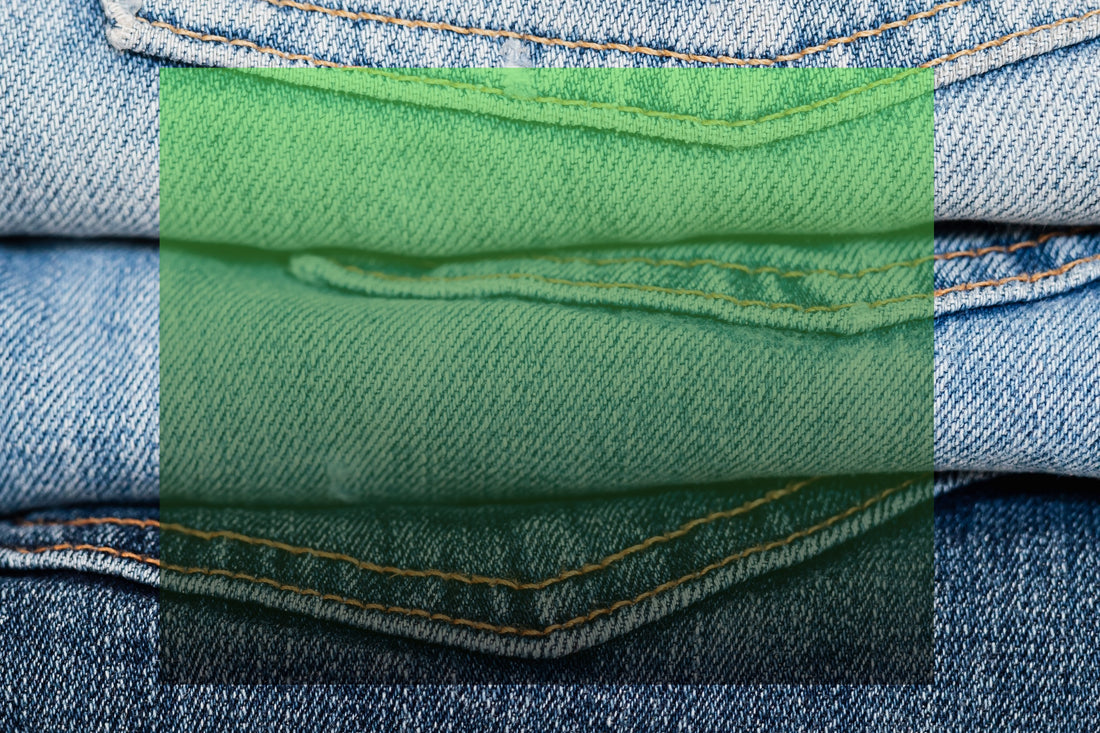
Problemet med greenwashing – og hvordan man identificerer det
Del

Cirkulær mode, bæredygtigt produceret, økologisk, etisk, vegansk… disse og mange andre buzzwords har spredt sig i modebranchen i de seneste år for at understrege modebrands' ansvar.
Så hvad ville man forvente af et konventionelt modemærke, der følger en fast fashion-forretningsmodel indtil da?
Man skulle tro, at disse brands ville omstrukturere deres forretningsmodel for at blive mere bæredygtige. Desværre investerer mange af dem hellere i PR-kampagner, der får dem til at fremstå mere bæredygtige, mens de fortsætter business as usual. Dette er vildledende for forbrugerne og skadeligt for vores planet og tekstilarbejderne.
Udtrykket "greenwashing" refererer til alle disse angiveligt bæredygtighedsinitiativer, der står i kontrast til en virksomheds faktiske forretningspraksis.
Det kan selvfølgelig være positivt, hvis et stort brand beslutter sig for at sætte bæredygtighed på deres dagsorden, da det kan øge bevidstheden om vigtige emner. Det er dog et problem, hvis virksomheder kun gør det for at lokke kunder til at købe flere af deres produkter uden at skabe varige forandringer.
Derfor er det endnu vigtigere for både detailhandlere og forbrugere at tjekke, hvad der gemmer sig bag en etiket .

Er det ægte eller bare tomme ord…? Hvordan identificerer man greenwashing
Det kan være vanskeligt og tidskrævende at identificere greenwashing. En tommelfingerregel ville være at kontrollere, om et brand fremmer bæredygtig og etisk produktion som et "tilføjelse", eller om disse værdier er kernen i deres forretning.
- Det hjælper at se på hårde fakta i stedet for vage beskrivelser og pæne ord. For eksempel kan du tjekke procentdelen af genbrugsmateriale, der bruges til et produkt (er det 100 % eller mindre?), og om bæredygtighedskriterierne kun dækker ét aspekt af produktionen, såsom materialet, eller hele produktionskæden fra råmateriale til fremstilling . Nogle gange reklamerer mærker endda med grøn emballage, såsom genbrugspapirmærker, mens selve produktet ikke opfylder nogen miljømæssige og sociale produktionskriterier. Derfor er det nødvendigt at se nærmere på det!
- Se på, hvad brands allerede gør , i stedet for hvad de lover for fremtiden. Ofte kører brands bæredygtighedskampagner på deres mål for fremtiden, såsom at blive fuldt cirkulære inden 2030 – mens de mangler en klar køreplan for, hvordan de vil nå deres ambitiøse mål, samt mangler dokumentation om ændringer, de allerede har implementeret. Ambitiøse mål er gode, men det er handlinger, der betyder noget.
- Undersøg, om brands kun fokuserer på miljømæssige aspekter såsom vandbesparende produktionsmetoder og reduktion af giftige kemikalier, der anvendes i farvningsprocesser, eller om de inkluderer sociale aspekter såsom ordentlige arbejdsforhold og lønninger, man kan leve af for tekstilarbejdere. Et virkelig bæredygtigt brand fokuserer på miljømæssige og sociale faktorer og leverer fakta og tal, der beviser deres engagement.
- Derudover skal mærker med et oprigtigt engagement i at tackle de problemer, modeindustrien forårsager, have hele produktets livscyklus i tankerne, inklusive genbrug efter forbrug. I gennemsnit producerer hver EU-borger 11 kg tekstilaffald om året, som for det meste ender på lossepladser eller forbrændes. Derfor skal virkelig bæredygtige forretningsmodeller også tackle problemer med overforbrug og overproduktion . For at reducere overforbrug fokuserer slow fashion-mærker på tidløse designs og produkter , der er lavet til at holde , så varerne ikke smides ud efter én sæson. Andre mærker tilbyder reparationer og inkluderer brugte varer i deres kollektioner. For eksempel tilbyder Nudie Jeans en livslang gratis reparationsservice og har et returprogram for alle deres jeans for at holde dem i et cirkulært kredsløb.

Vigtigheden af uafhængige certificeringer og rapporter
Generelt er det afgørende at stole på uafhængige certificeringer som Global Organic Textile Standard (GOTS) , Fairtrade Textile Standard og Organic Content Standard 100 (OCS 100) . Det er generelt meget mere troværdigt, hvis en virksomhed bliver revideret af en ekstern organisation, end hvis den er afhængig af sine egne kontroller. Du kan også tjekke, om et brand er medlem af Fair Wear Foundation, eller søge efter rapporter fra civilsamfundsorganisationer om fair arbejdsforhold.
For eksempel etablerede Clean Clothes Campaign " Fashion Checker " for at informere forbrugerne om krænkelser af arbejdstagerrettigheder og de specifikke mærker, der var/er involveret. De fandt ud af, at 93 % af alle mærker ikke betaler en løn, man kan leve af – hvilket betyder, at de ikke betaler tekstilarbejdere nok til at dække deres basale behov. Et andet meget nyttigt værktøj er " Good on You " , en app, der vurderer modemærker for deres etiske og bæredygtige praksis. Bag appen analyserer en gruppe modeprofessionelle, forskere, udviklere og kampagnefolk mærker fra hele verden og giver dem en letforståelig score. De rangerer fast-fashion-mærker som ZARA og Jack & Jones samt bæredygtighedspionerer som VEJA og Kings of Indigo.
Gør dit valg lettere: Vores ansvar som forhandler
Som detailhandler med fokus på bæredygtig og etisk mode ser vi det som vores ansvar omhyggeligt at udvælge de mærker, vi arbejder med, og grundigt undersøge og sætte spørgsmålstegn ved deres miljømæssige og sociale påvirkning. Igen er dette ikke altid let og rejser vanskelige spørgsmål om, hvad man skal prioritere: Lavet i Portugal eller Fairtrade fra Indien? Økologisk bomuld eller genbrugsfibre?
Det er svært at træffe informerede beslutninger, og her hos Res-Res ser vi det som vores ansvar at hjælpe dig med at træffe de bedste valg for dig selv, planeten og producenterne bag produkterne.
- skrevet af Lea Kress
